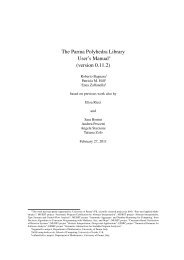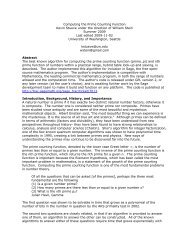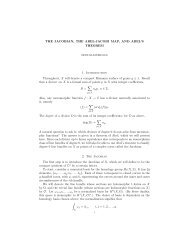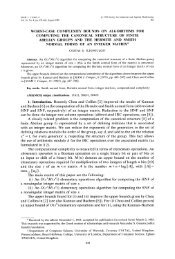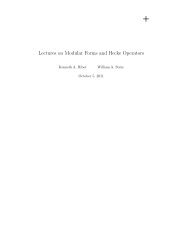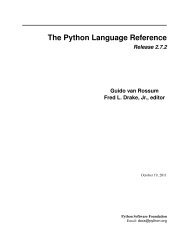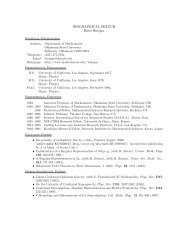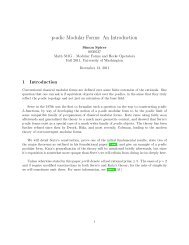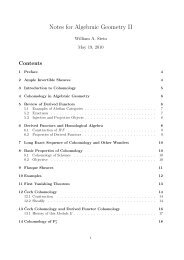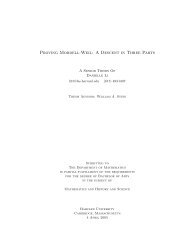Introductory Differential Equations using Sage - William Stein
Introductory Differential Equations using Sage - William Stein
Introductory Differential Equations using Sage - William Stein
Create successful ePaper yourself
Turn your PDF publications into a flip-book with our unique Google optimized e-Paper software.
1.4. FIRST ORDER ODES - SEPARABLE AND LINEAR CASES 29<br />
2<br />
1.5<br />
1<br />
0.5<br />
1 2 3 4<br />
Figure 1.8: Plot of y ′ = y(y − 1)(y − 2), y(0) = y 0 , for 0 < t < 4, and various values of y 0 .<br />
There are a variety of very specialized substitution methods which we will not present in<br />
this text. However one class of differential equations is common enough to warrant coverage<br />
here: homogeneous ODEs. Unfortunately, for historical reasons the word homogeneous has<br />
come to mean two different things. In the present context, we define a homogeneous firstorder<br />
ODE to be one which can be written as y ′ = f(y/x). For example, the following ODE<br />
is homogeneous in this sense:<br />
dy<br />
dx = x/y.<br />
A first-order homogeneous ODE can be simplified by <strong>using</strong> the substitution v = y/x, or<br />
equivalently y = vx. Differentiating that relationship gives us v + xv ′ = y ′ .<br />
Example 1.4.5. We will solve the ODE y ′ = y/x + 2 with the substitution v = y/x.<br />
As noted above, with this substituion y ′ = v +xv ′ so the original ODE becomes v +xv ′ =<br />
v + 2. This simplifies to v ′ = 2/x which can be directly integrated to get v = 2log(x) + C<br />
(in more difficult examples we would get a separable ODE after the substitution). Using<br />
the substitution once again we obtain y/x = 2log(x) + C so the general solution is y =<br />
2xlog(x) + Cx.<br />
1.4.4 Linear 1st order ODEs<br />
The bottom line is that we want to solve any problem of the form<br />
x ′ + p(t)x = q(t), (1.5)<br />
where p(t) and q(t) are given functions (which, let’s assume, aren’t “too horrible”). Every<br />
first order linear ODE can be written in this form. Examples of DEs which have this form:<br />
Falling Body problems, Newton’s Law of Cooling problems, Mixing problems, certain simple<br />
Circuit problems, and so on.



